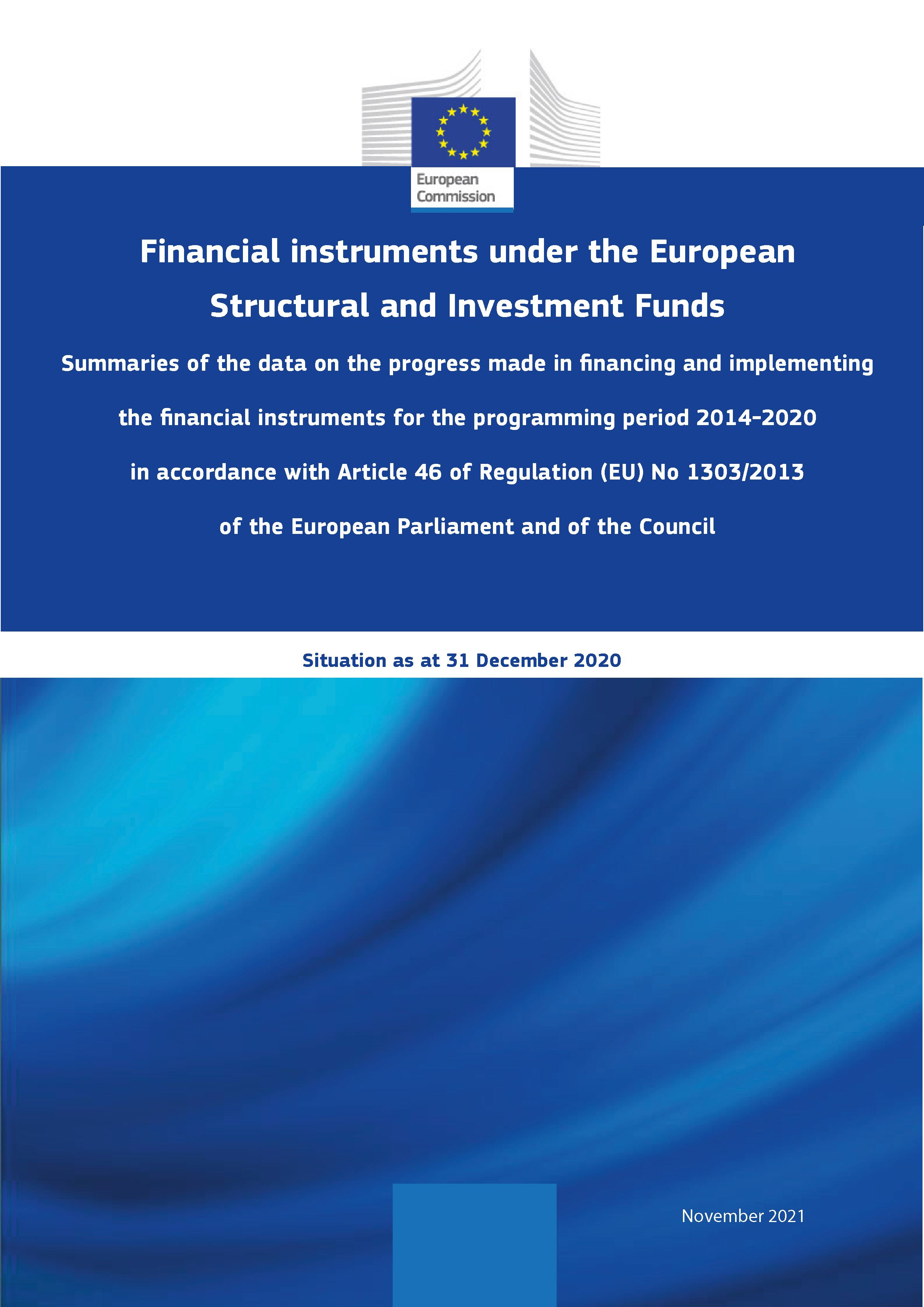Summaries of the data on the progress made in financial instruments – Updates as at 31 December 2020

The European Commission has published its annual report summarising the progress made in financing and implementing financial instruments (FIs) supported by European Structural and Investment Funds (ESIF) for the period until end December 2020.
By the end of 2020, the total programme contributions committed to FIs were nearly EUR 29 billion (EUR 23.5 billion at the end of 2019) of which EUR 21.6 billion was ESIF.
The summaries present data on the progress made in financing and implementing financial instruments (FIs) supported by European Structural and Investment Funds (ESIF) in the 2014-2020 programming period as of 31 December 2020. They are based on data reported by the managing authorities in accordance with Article 46 of Common Provisions Regulation (EU) No 1303/2013 of the European Parliament and of the Council (CPR), the Commission Implementing Regulation (EU) No 821/2014, and Fund-specific regulations.
The publication’s key messages included that:
- the European Union achieved the target set out in the Investment Plan for Europe to double the use of ESIF FIs, however it remains necessary to maintain the momentum and to further speed up in their implementation.
- Coronavirus Response Investment Initiative Plus (CRII+), demonstrated that ESIF FIs are able to adapt in a flexible way to the changing needs of the Member States.
- ESIF FIs prove to be a cost-efficient delivery mechanism of Union policies as the reported management costs and fees lie below the regulatory ceilings defined in the ESIF legal framework as well as in the legal framework of centrally managed financial instruments.
Upon the coronavirus outbreak, timely adoption of CRII+ allowed managing authorities to deploy FIs in all EFI Funds to tackle the unexpected crisis for all ESI Funds:
- European Regional Development Fund (ERDF) FIs allocated EUR 7 billion for working capital for SMEs in the COVID-19 context. ERDF FIs supported 478,000 SMEs, of which 375,000 qualified as microenterprises
- Despite the COVID-19 crisis, European Social Fund (ESF) FIs impressively progressed by more than doubling the amounts committed and paid to final recipients.
- As at August 2021, 13 Rural Development Programmes (RDP) in 8 MSs offer support for stand-alone working capital, an option that was introduced by the CRII+. In total, RDP amendments added a total of EUR 94.1 million, covering also non-COVID needs.
- Following the coronavirus outbreak, the managing authority for the sole FI supported by EMFF made it possible for the final recipients to benefit from decreased interest rates from April 2020.
The three most common Thematic Objectives according to commitments to FIs in the funding agreements remain:
- TO3 ‘Enhancing the competitiveness of small and medium-sized enterprises (SMEs)’ – 70.3%,
- TO4 ‘Supporting the shift towards a low-carbon economy in all sectors’ – 11.0%,
- TO1 ‘Strengthening research, technological development and innovation’ – 10.3%.
The annual summaries report is divided into chapters by the different ESI Funds: ERDF/CF, ESF/YEI, EAFRD and EMFF. Data on FIs were originally supposed to be submitted by programme authorities by the end of May 2020. However, the regulatory deadline was postponed until the end of September 2020, in order to make it possible to focus all the efforts on addressing the COVID-19 crisis. It can be found on the fi-compass website.

